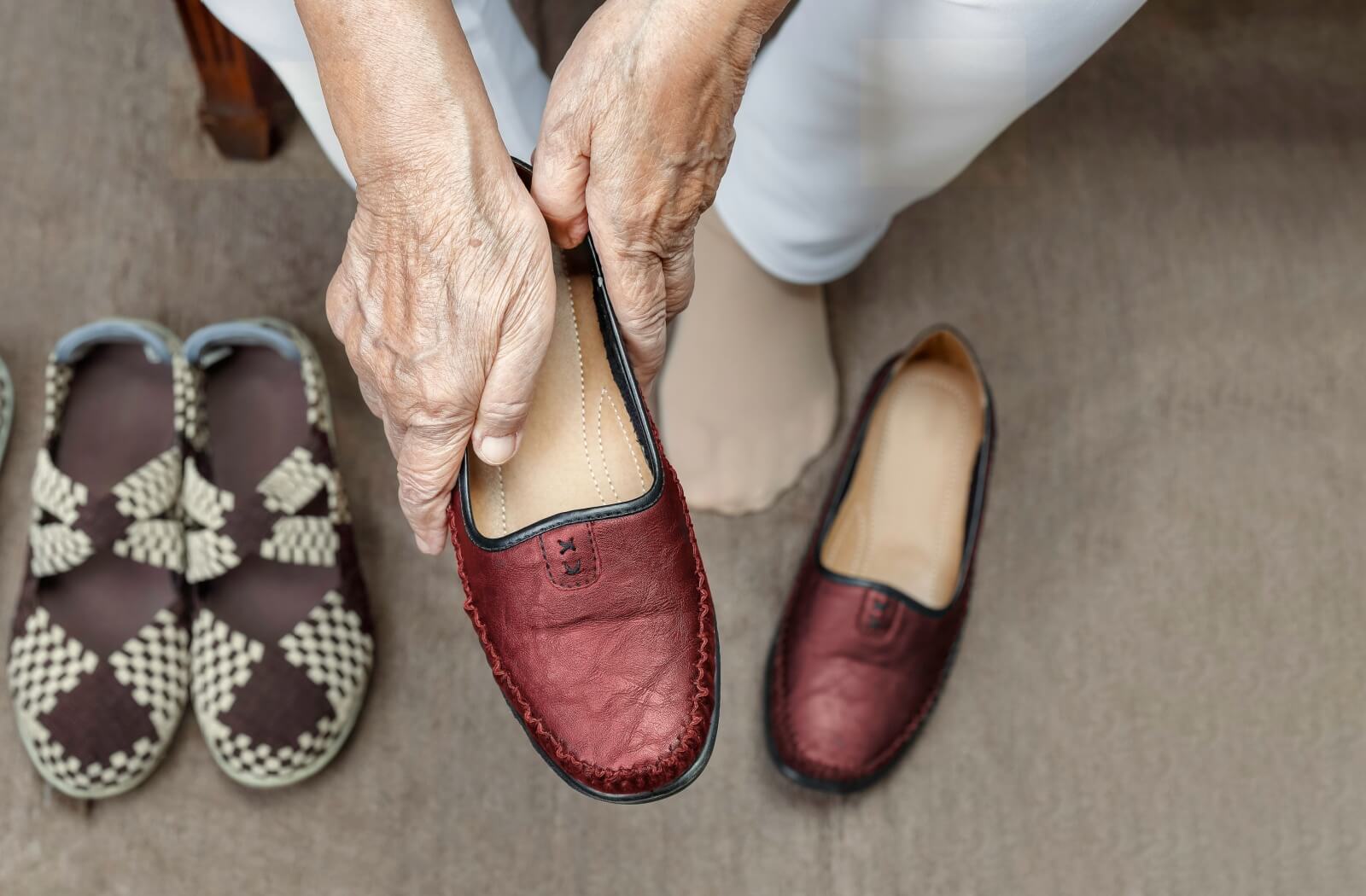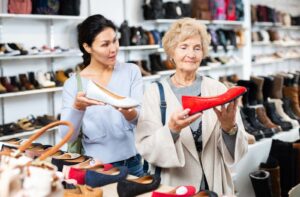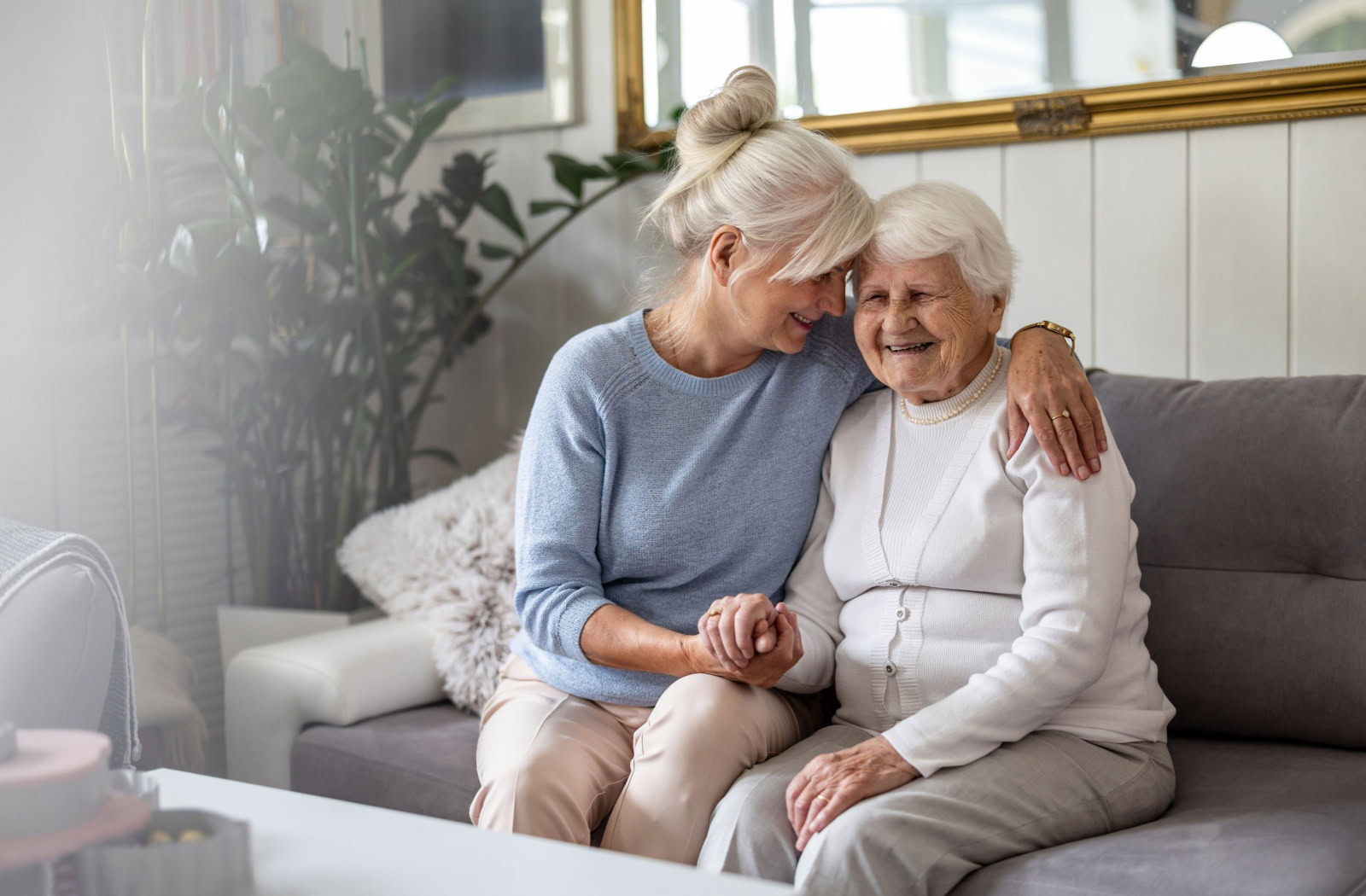Best Shoes for Elderly People With Dementia
- Posted on
- By Mira Vie Senior Living

Choosing the proper footwear for seniors with dementia is more than just a question of comfort—it’s about safety, dignity, and quality of life. For caregivers and family members, the search for shoes combines concerns like preventing falls with the desire to provide their loved one with comfortable and easy-to-use footwear.
Some shoe types that best suit these different needs are slip-on, velcro, wide-fit, and lightweight shoes. All of these designs offer care-friendly designs and safety features.
Why Good Footwear Matters for Dementia Patients
For seniors living with dementia, shoe choice directly impacts their mobility, stability, and safety. Footwear is closely tied to an older adult’s ability to maintain some independence in daily activities like walking to the dining table, visiting the bathroom, or enjoying a stroll outdoors.
- Prevention of Falls: According to the CDC, falls are the leading cause of injuries and fractures in older adults. Shoes with appropriate grip, stability, and support can significantly reduce this risk.
- Boosting Comfort and Mobility: Over time, age-related changes to the feet—such as bunions, hammertoes, or swollen joints—may make standard shoes painful. Well-fitted footwear can promote mobility without discomfort.
- Maintaining Dignity and Independence: Shoes that are easy to slip on allow seniors to maintain a sense of independence by allowing them to dress themselves with minimal assistance.
Getting footwear right goes beyond a convenience factor—it plays a fundamental role in supporting overall health and well-being.
The Best Types of Shoes for Seniors With Dementia
From care-friendly designs to safety features, here are some great shoe options for your loved one:
Slip-On Shoes
Slip-on shoes are a game-changer for seniors with dementia who may find traditional laces too complicated. These shoes are all about ease of use, offering a clean, hassle-free design that doesn’t require bending down or fiddling with fasteners. Look for stretchable slip-on models that mold to the foot’s shape for added comfort.
Pro Tip: Opt for snug shoes that don’t slip off the heel. Loose slip-ons may create a tripping hazard.
Velcro Shoes
Adjustable straps allow these shoes to accommodate feet that swell throughout the day, making them perfect for providing a custom fit without needing technical adjustments like you’d encounter with shoelaces.
Best Use Case: Seniors whose motor skills are in decline, as Velcro closures are quick and straightforward to secure.
Non-Slip Shoes
Non-slip soles are designed to reduce the risk of slipping on smooth wooden floors or wet surfaces, such as bathroom tiles. Shoes with rubber outsoles or grooves are incredibly reliable at providing grip.
Safety Pays Off: According to a study published by the Journal of Geriatric Physical Therapy, non-slip footwear reduces fall-related injuries by as much as 23%.

Wide-Fit Shoes
Many seniors develop foot conditions that result in irregular foot shapes or sizes. Wide-fit shoes have a broader design to provide adequate space, relieving discomfort caused by pinching or rubbing.
Extra Consideration: Look for styles that include memory foam or gel insoles to enhance comfort further.
Lightweight Shoes
Lightweight designs benefit those who struggle with fatigue or shuffle their feet while walking. These shoes are often made of breathable materials, like mesh or soft knit fabric, that adapt to movements.
Added Perks: Lightweight designs are easier for caregivers to carry around when transporting extra pairs on outings.
Tips for Ensuring a Proper Fit
Even the best shoes are useless if they don’t fit properly. Use these tips to ensure a comfortable fit every time:
- Measure Regularly: Feet change size and shape over time. Measure both length and width to ensure the correct size is chosen.
- Check for Stability: Test shoes when standing and walking. Focus on heel stability to ensure secure footing.
- Adjust for Swelling: Choose shoes that leave enough room for swelling. Velcro or elastic panels can help with this.
- Shop for Shoes in the Afternoon: Feet often swell throughout the day. Shopping late in the afternoon ensures shoes account for this natural change.
Creating a Dementia-Friendly Walking Environment
Even with the perfect pair of shoes, a supportive walking environment is key to ensuring safety. In-home caregivers should consider these adjustments to encourage mobility:
- Declutter: Clear pathways of rugs, furniture, and tripping hazards.
- Install Proper Lighting: Diming hallways or rooms with shadows can confuse those with dementia. Bright, even lighting is the best alternative.
- Designate Walking Circuits: Create predictable routes for walking that lead to desirable destinations, like a dining area or garden.
Carefully combining a safe environment with supportive footwear can greatly improve your loved one’s mobility and confidence. Memory care communities consider all these safety concerns when designing their living spaces, making them very safe for residents—regardless of footwear.
Supporting Better Mobility, One Step at a Time
Choosing the right shoes for seniors with dementia requires balancing comfort, safety, and independence—but it doesn’t have to be overwhelming. By focusing on key features and fitting tips, caregivers can ensure each step promotes better mobility and an improved quality of life.
Mira Vie Senior Living knows that a dementia-friendly environment empowers seniors to feel safe and supported. Contact us today to connect with a dementia care community that can help support your loved one.
Related Articles

10 Early Signs & Symptoms of Dementia: What to Look Out for in Your Loved One
Key Takeaways Occasional forgetfulness is normal, but consistent changes that disrupt daily life may signal